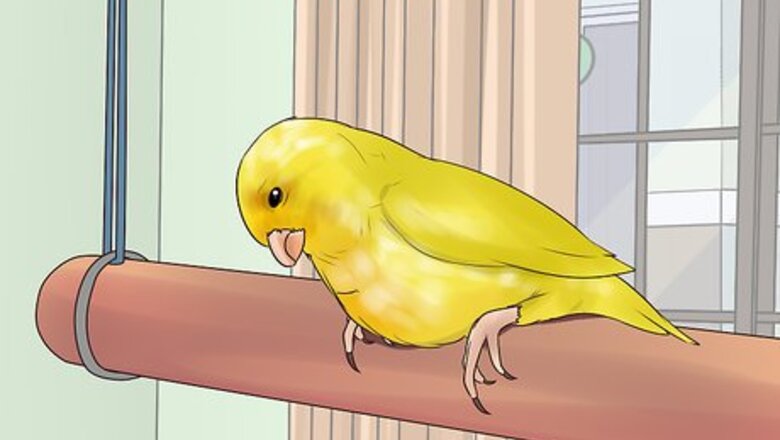
views
Monitoring Your Canary
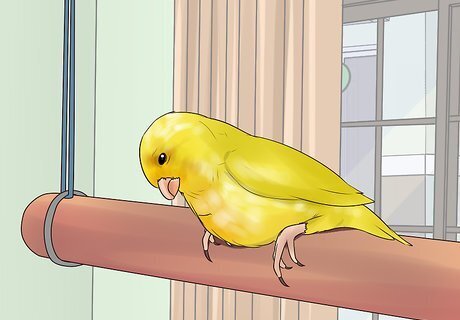
Note any decrease in activity. Canaries are active birds that enjoy flying around in their cages. If your canary has stopped flying or if they are spending long periods of time on their perch, you may want to take them to a vet. A sick canary may tuck their head under their wings or sleep near their food bowl.
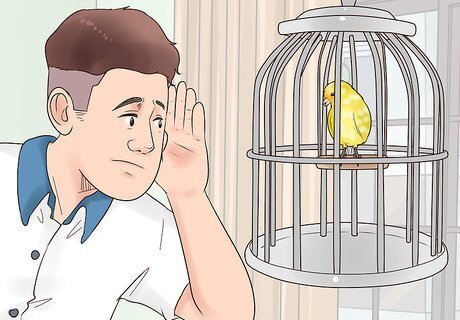
Listen to the sounds that they make. A healthy canary should be chirping or singing. A sick canary may be quiet, or they may make wheezing, sneezing, clicking, or coughing noises. Pay attention to their breathing as well. Rapid or labored breathing can be a sign of canary pox or the fungal infection Aspergillosis.

Observe how much they eat and drink. Typically, canaries should eat between one and two teaspoons of seed or pellets a day. They should not need their water replaced more than once a day. If you notice any changes in their appetite, the bird may be ill. If you find their water dish empty or if they are drinking more than usual, they may be dehydrated. If your bird isn't eating their food, they may have lost their appetite. This is a common symptom of many illnesses.
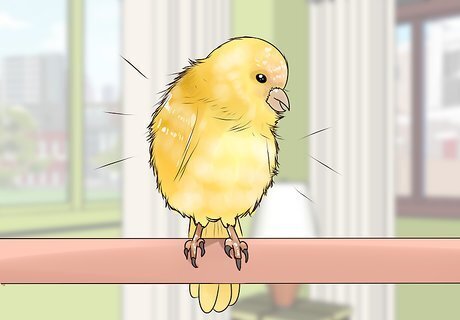
Watch for puffed up feathers. Canaries normally puff up their feathers when they are sleeping or if they are cold. If they are not sleeping, however, and they remain puffed up for long periods of time, it may mean that your canary is unwell.

Inspect their droppings. When you change the cage liner every day, check their droppings. Healthy droppings should have clear and watery urine, chalky white urates, and dark, solid feces. Any change in color or consistency means that something may be wrong. Yellow or green coloration can be a symptom of liver disease. Red or black coloration can be a sign of internal bleeding. Loose or runny feces can indicate that your canary has diarrhea. Healthy droppings should not smell. If you notice a foul odor, it may mean that they have a parasite called giardia.

Check their cage for discharge due to sneezing. You also might find some discharge and swelling around their nares. Discharge due to sneezing is often a clear sign that your canary has an illness.
Inspecting Your Canary

Examine their feathers. Typically, feathers should be smooth, shiny, and full. Patchy, thin, or missing feathers can mean that the canary is sick. If the canary is plucking their own feathers, they may be stressed or unwell. Feathers missing from their head can be a sign of mites.
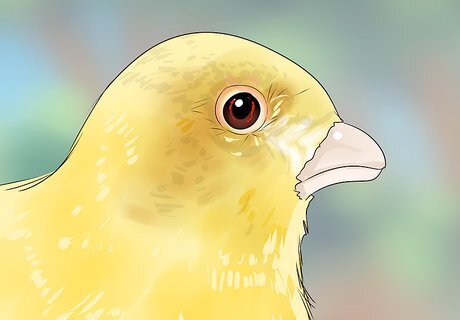
Glance around their eyes for discharge or redness. The eyes of a healthy canary should be clear and black. Any discharge from the eye can indicate an eye infection. Make sure there is no redness or swelling around the outside of the eye either.

Look for scaly skin or scabs. Gently brush through your canary's feathers with a finger, and check unfeathered areas, such as their feet and beak. If there are any lesions, lumps, or scabs, you should take your canary to a vet. They may have a parasite or canary pox. Lesions are one symptom of canary pox. In their early stages, they may be yellow or white, but they will start to scab over as the disease progresses.
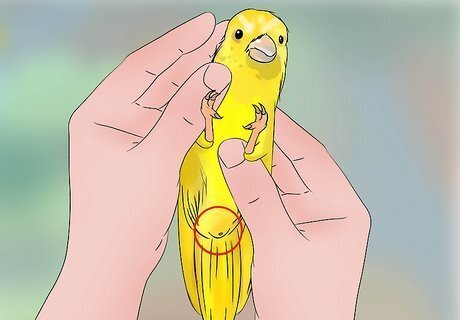
Lift them up to check their vent. The vent is under the bird near their tail feathers. This is where they excrete their droppings. The feathers around the vent should be dry and smooth. If they are wet or stained, they may have diarrhea.

Touch the stomach to check for egg binding. If your canary is female, you should gently press your fingers against her abdomen. If you feel any swelling or a hard, protruding bump, she may have a bound egg. Take your canary to a vet immediately. Other signs of egg binding include bobbing their tail, lack of appetite, or trouble with breathing.
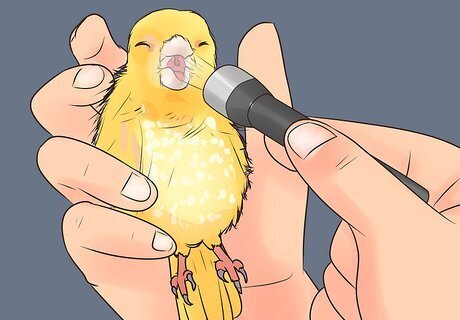
Shine a light on their throat to look for air sac mites. If you hear your canary making a clicking noise, you may want to check for air sac mites. Take a small, pointed beam of light, and press it against your canary's windpipe in a dimmed room. If you see small grains inside their throat, they likely have mites. You can also stroke your canary's throat to look for a bump or swelling, which would be an indication of a distended crop.
Treating Your Canary

Visit an avian vet. An avian vet is a vet that specializes in birds. They will be able to identify what is wrong with your canary. They may do blood work, fecal tests, or X-rays. Not only will the vet diagnose what is wrong with your canary but they will also prescribe treatment for the canary's exact problem. If you live in the United States, you can find a local avian vet by checking the database at the Association of Avian Vets.
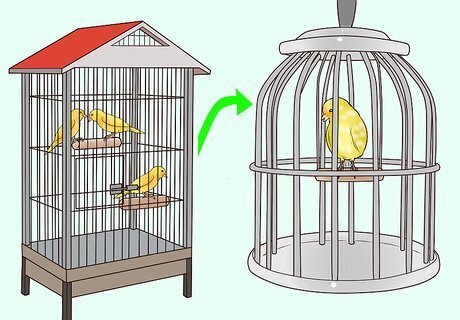
Quarantine them from other canaries. Diseases can spread quickly among birds. If your canary lives with or near other canaries, put them in a separate, clean cage in a different room until they have healed.
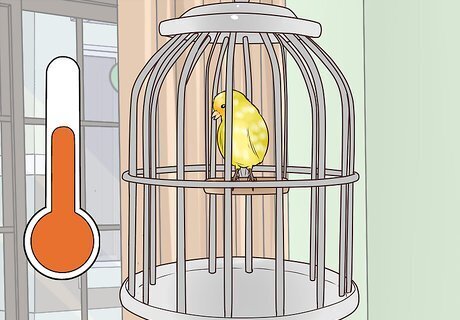
Keep the room warm. A sick canary may not be able to keep itself warm. Make sure the sick canary is in a warm room, ideally one that is around 90 °F (32 °C). You can also use a bird carrier or fish tank heater to keep their cage warm.
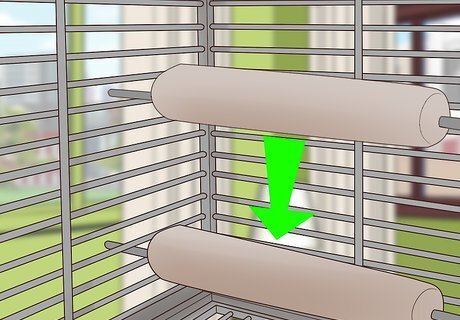
Lower their perches. Sick canaries are prone to sit on their perches all day, but if they grow weak, they can fall off and injure themselves. Make sure that you lower the perches in their cage to reduce this risk.
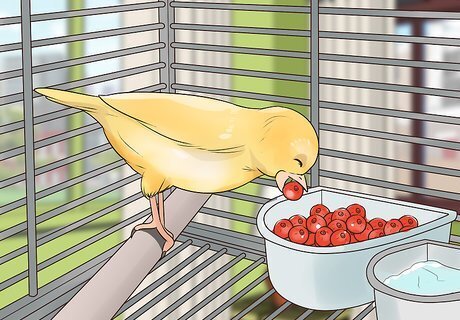
Encourage them to eat. Always keep your canary's food dish and water bowl full, even if they are not eating. You can use soft foods, like berries, to encourage them to eat.














Comments
0 comment